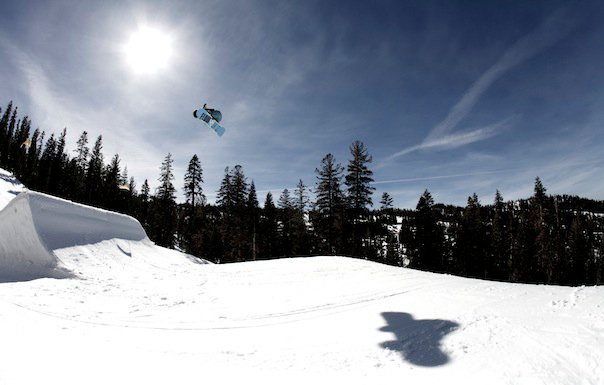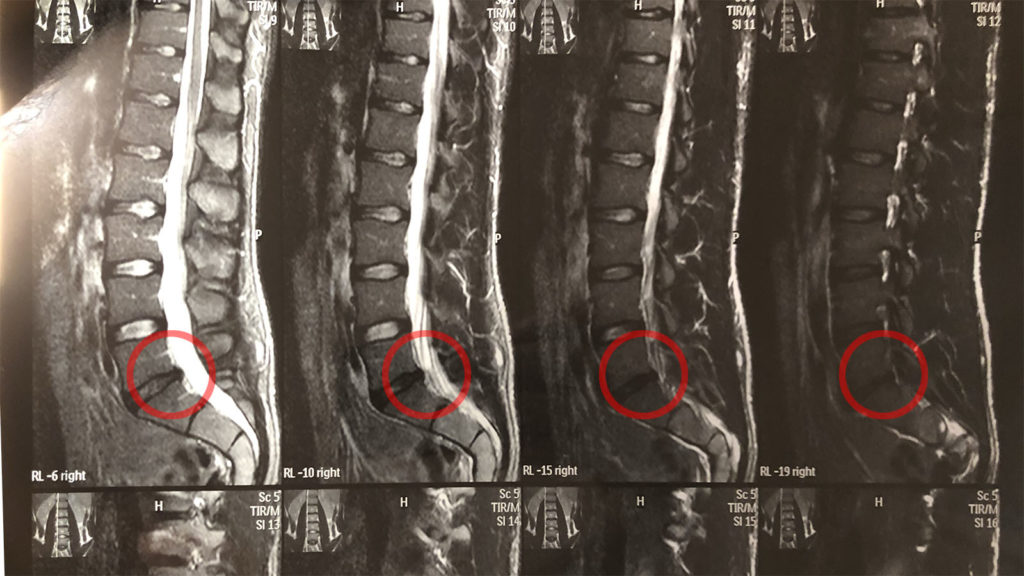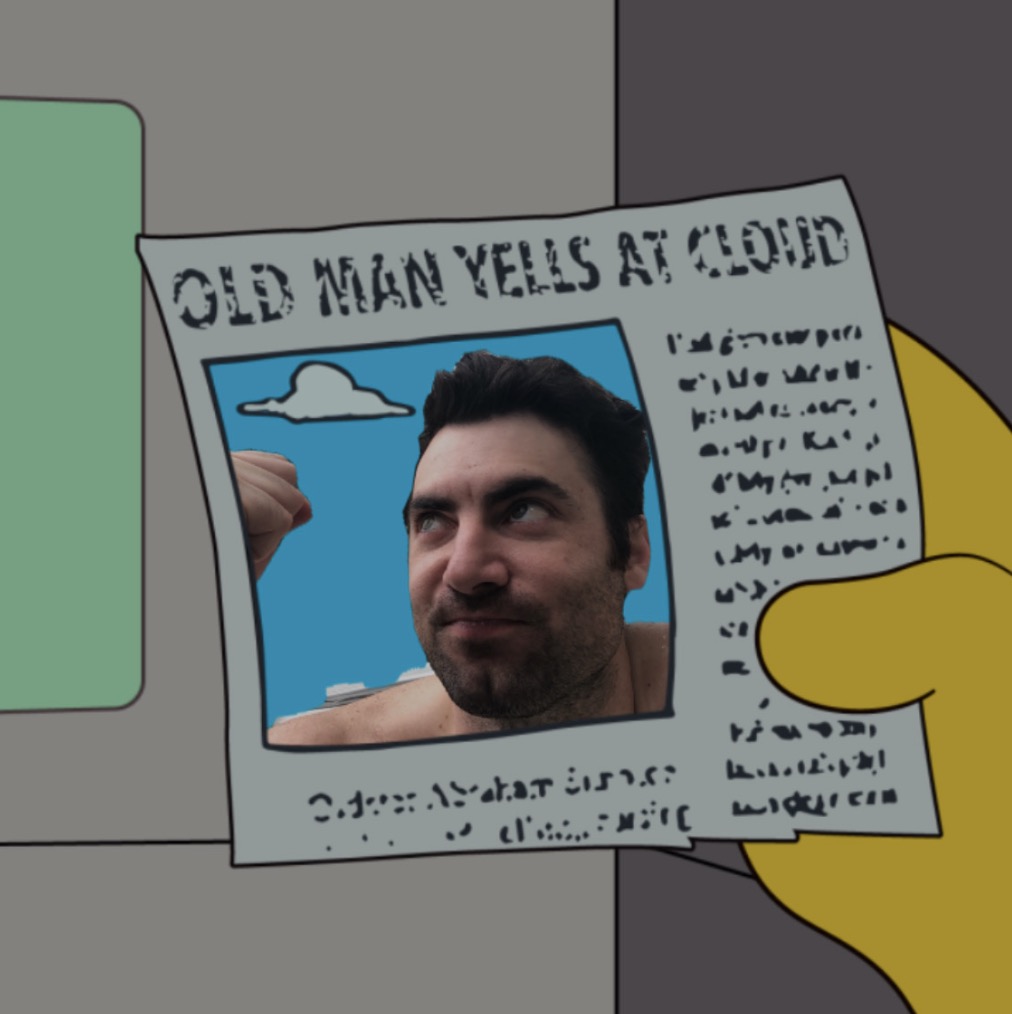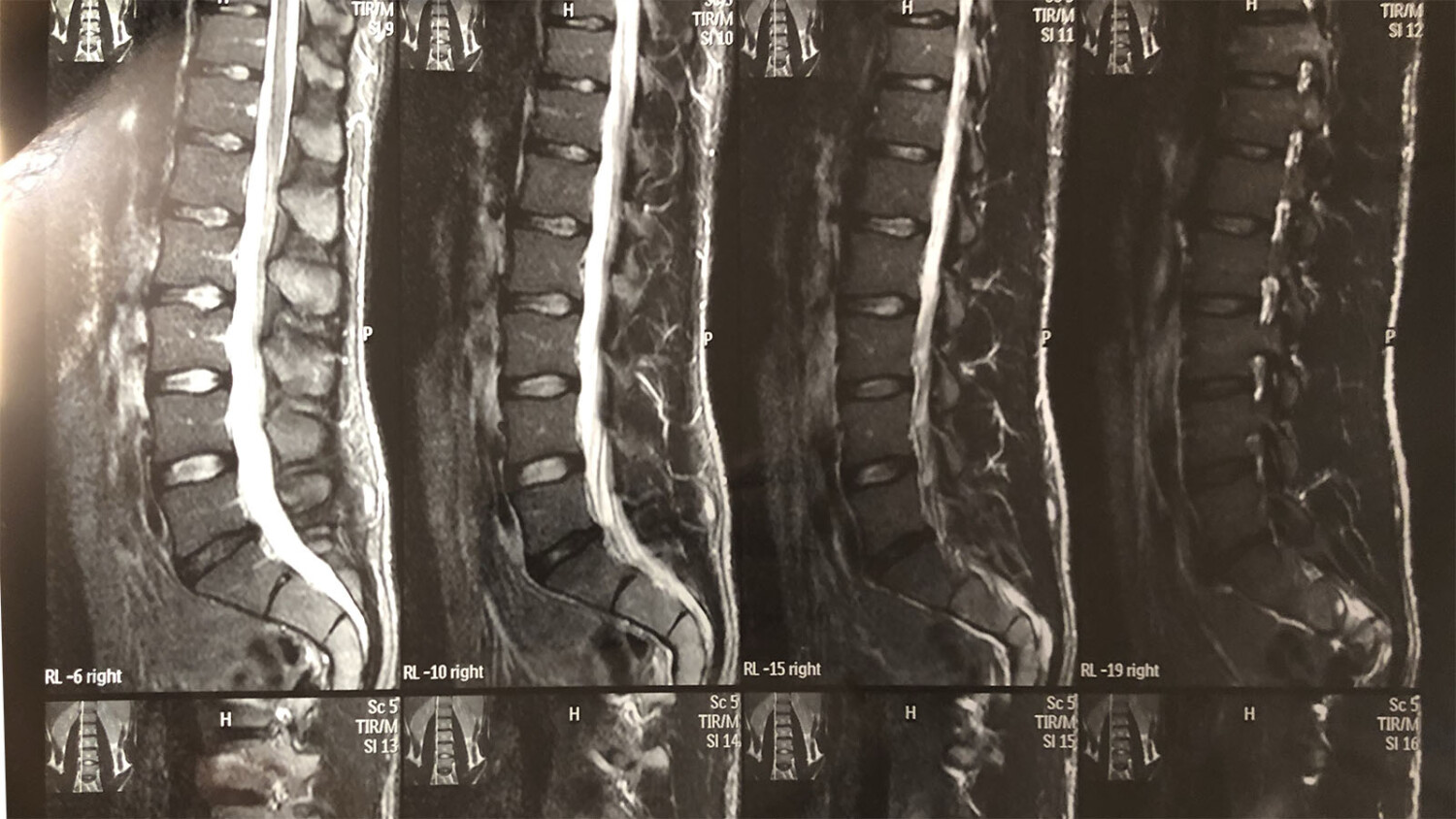Why I Haven’t Worked in Four Months (And Why I’m Getting Back Surgery)
For the last decade, I’ve been dealing with varying levels of on-again, off-again back pain and the associated frustrations that come along with it. From almost non-existent to “I literally can’t even get out of bed,” the pain has been with me in some form daily, affecting work, relationships, and so much more. For anyone who has suffered with chronic health issues or pain, you know that it can dominate your life in nearly every way.
From the simplest day-to-day decisions to complex long-term life decisions, it’s like carrying around a little version of Gollum on your back that won’t ever shut the hell up – taunting you, telling you how you can’t do things, popping out at the most inopportune time seemingly for no reason at all (in my case, perhaps I picked up a coffee cup wrong or just slept weird). “Oh, hello, it’s your L5S1, of course you didn’t want to have a nice day!”
How I Injured Myself…Repeatedly…
In 2009, during the time in my life when the recklessness of youth was at its peak, I decided that I wanted to be a professional snowboarder. I was really freaking good, probably, humbly, top 1% in the world, competing internationally and chasing the endless winter across hemispheres, but given that the difference between the top 1% and the .1% of snowboarders who actually make a living at it is still a rather enormous gulf, in hindsight this actually working out was probably a bit far-fetched. In any case, I ended up hurting myself multiple times in various ways, all of which sort of still haunt me to this day.


The most dramatic injury was a herniated L5-S1 disc – for those interested or who know the lingo, it happened when I attempted to do a frontside 270 onto a ledge over a set of stairs. I hooked my heel edge as soon as my board made contact and reverse-scorpioned onto the ledge / stairs. I don’t really know how or what I hit, only that as soon as I landed there was an excruciating pain in my lower back. I remember laying out on a picnic table in an effort to subdue the pain, and crawling into the back of my friend’s car in the fetal position for the car ride home. Over the subsequent weeks and months the pain went from keeping me unable to walk or stand to subsiding to a pretty manageable level. After a few MRIs, physical therapy, and an epidural injection, the pain had reduced to basically zero, and I continued snowboarding at a high level for a couple years. I suspect that this was the first herniation event and was, while painful, relatively small in scale.

In 2011, after two more futile years’ worth of attempts at making a career out of snowboarding, I tore my AC ligament doing a backside rodeo (essentially a blind backflip off your toes with a 540 degree rotation) when I landed and caught my toe edge in a bomb hole at the bottom of a jump. Not a life-altering injury, except for the fact that 2 months later, when my doctor cleared me to ride again, I did the exact same thing doing the exact same trick at the exact same mountain. I snap-quit snowboarding in a blind rage right there – I barely thought twice about it. I was done. I decided to quit the lucrative (hah) snowboarding career and pursue the lucrative (hahahaha) career of photography. My parents’ eyes rolled so hard I’m pretty sure they were going to fall out of their head.
After moving to Los Angeles to escape the cold, I was committed to keeping myself in good shape so picked up tennis again (I had grown up playing, and still had some chops, and have always been somewhat interested in following the Grand Slams when on TV, etc, also Roger Federer is my all-time sports hero so it made sense). Like anything in my life, as soon as I’m interested in it, I pursue it to the exclusion of all other things. I immediately joined a bunch of leagues, teams, etc, and was playing 3-4 times a week in an effort to stay in shape and give me something to do. My pain levels from the herniated disc suffered while snowboarding were pretty minimal at this point and for the most part it seemed like it had healed.
Also, pro tip: tennis is an incredible networking activity. It’s the definition of well-heeled social sport, and I met tons of my first clients through tennis leagues and meetups.
Anyway, during a league event in 2014, I was playing doubles and was positioned on the left side of the net when my opponent tried to hit a passing shot down the line into the doubles alley. I reflexively reached from right to left in an attempt to hit a backhand volley to block the ball – and instantly felt a sharp stabbing pain in my lower back. Laid out, again, on the ground, for at least 30 minutes and unable to move. Eerily similar to the snowboard injury.
I had further herniated the same disc, making the same injury worse. Except this time the pain never really subsided. Months passed and the pain receded, but any intense physical activity would bring it back to pretty awful levels. A series of doctor appointments basically amounted to “yeah, you’ve got a herniated disc, you can do physical therapy and take some Aleve to help, but get used to it.” Not something that I wanted to hear. It wasn’t quite severe enough to operate on, but at the same time wasn’t quite good enough not to bother me.
The Effect on My Working Life
Despite a year or two of physical therapy, my back never really improved back to pre-tennis injury levels. Lifting anything over 15lbs usually resulted in pain that lasted 24-48 hours, and anything more than that could cause elevated pain for a week+. On some unlucky days, just picking up a camera out of my bag would be enough to trigger the pain.
Due to my inability (or lack of desire, honestly) to continue wrestling with large amounts of equipment and furniture, my work started to evolve to reflect my chronic pain. I made a conscious decision to travel with less gear. I went from six or seven cases worth of lighting and grip down to a single rollaboard camera bag and one piece of checked luggage with only one light. Absolutely anything extraneous was removed from the kit, and I relied more on post production and location trickery to get the results I wanted. I hired an assistant who I’d bring on all of my shoots – who would help to move furniture, schlep equipment, and so on. I love the looks I get when we are boarding a plane and my assistant is wrestling my 30lb camera bag into the overhead bin while I stand there watching. “Hey dude, help the girl!” I literally can’t – because I don’t want to risk putting myself into a state of misery right before a shoot. I know I’ve got some strange looks from clients and onlookers as she runs around moving furniture and the camera while I stand there like a diva doing nothing except lining up the shot and focusing on ‘big picture’ things.
In a way, it’s probably made my work far better – because I don’t have to worry about little details and it frees up my headspace to focus on one thing only. So, thanks, I guess, herniated disc, for teaching me that lesson early in my career.
Over the years the amount of good days has been far overshadowed by the amount of bad days – the number of work trips I’ve been on where laying out on the hotel bed at the end of the day is the best thing to happen to me has become far too high. It’s gotten harder and harder to peel myself out of bed, and my reluctance to even attempt lifting or moving something is pretty outrageous – there were even a few days where I had to lay down on the ground outside of our shoot to rest my back just to get through the day.
I would become irritable for seemingly no reason on bad days (actually, I’d say I had a very good reason to become irritable, but am far too young to be) and the exhaustion caused by carrying pain all day would hit me hard. I’d get cranky around family members or out at dinner with friends, would withdraw from social situations, or avoid fun things while offering up dubious reasons as excuses. So I decided that after a manic 2019 in which I shot some incredible projects and learned plenty of hard lessons, 2020 was going to be the year that I chilled out with work and tackled this thing head on.

No matter what it took – physical therapy, personal trainers, daily stretching, surgery, pills, who cares – I was going to deal with this once and for all. I set appointments with some of the top surgeons, top physical therapists, and top personal trainers to get to the bottom of it. Of course, everyone is going to have different opinions. Therapists don’t recommend surgery, surgeons don’t think physical therapy alone is enough to fix the problem, and so on. I went to out-of-network specialists to the tune of $900 per appointment, got into CT scan tubes, MRI tubes, X-ray machines, had my upper butt area felt by more people than I need to remember, and repeated my story ad-nauseum to anyone who would listen.
In the end I settled on a specific physical therapy routine that I would do every day (or as much as feasible) in an effort to correct some poor posture and atrophying muscles. Due to my relative inactivity compared to my snowboarding and tennis days, I (and a few doctors) had a feeling that my weakened core muscles were allowing my condition to worsen as my spine wasn’t being properly supported by my core muscles. If this failed, I would go to surgery – the first and least invasive option, a microdiscectomy, would cut out/lop off the piece of disc that is impinging on the spinal nerve. The other two options presented to me were a total disc replacement or a spinal fusion – both do-able, but at my age (32) a bit aggressive considering the unknown lifespan of hardware and ability to potentially treat the source of the problem with a discectomy first. A fusion is also a huge surgery with a long recovery time, which also impacts the vertebrae directly adjacent the site – usually weakening them by placing extra stress on them and limiting range of motion. Not fun at 32!
Thanks, I’m Healed
Let me take a moment here to release my inner Larry David. Over the years I have heard from basically everyone that I have ever confided in about this problem that they have a solution or a recommendation. I have had people tell me, under no uncertain terms, that I’d be making a huge mistake by getting surgery, or that physical therapy was a huge waste of time and money, and that I should try Yoga, or that I should try going to their chiropractor buddy, or that I should try drinking Kombucha or that the moon’s phase has something to do with my pain or that if I just went and got acupuncture from this guy in K-town I’d be good to go. Holy shit.
I get that it isn’t malicious or intended to be annoying and that people generally do want to help – everyone knows someone who has had a “back problem” at some point in their life, but there are so many pieces of conflicting information and contrary opinions out there. After seeing my most recent MRI taken in November, the surgeon I consulted with was almost in a state of shock at seeing my condition. There is (was, hopefully, by the time you read this) a damn near kiwifruit-sized herniation squeezed between my spine and spinal nerve. Almost as if someone stomped their heel into a jelly donut, except the donut is my vertebra and the jelly is disc material that was pressed out into my nerve. Yoga isn’t going to neatly tuck the disc material back into the disc and zip it up to stay, and honestly even the thought of yoga makes me cringe when there are days I can hardly get out of bed.
Unfortunately, I actually think a lot of this conflicting information and unsolicited advice is what made me put off getting this taken care of for so long. While most people mean well, it did tend to have the effect of minimizing the problem for me – if it was something that yoga, acupuncture, or essential oils could have fixed so easily, why bother with surgery? So I beg of you, if you have a friend who moans about their chronic pain, try to lend an ear and some support, instead of unsolicited advice which may end up minimizing the problem in the sufferer’s head. I’m at the point where I can literally not even walk around the block without having to sit down and heave like Peter Griffin after he stubs his toe.
Why I’m Getting Surgery
In fall of 2019, after meeting with plenty of specialists and getting plenty of opinions, I pursued a physical therapy routine and did see some promising results. By dialing back the amount of travel and work I was doing, I tried to focus full time on recuperation. I haven’t done a location shoot in over four months at this point – I’ve swam nearly every day, did body-weight exercises galore, and generally got into pretty great shape for the first time in years. To feel an exercise high again was incredible (highly recommend it!) and to have streaks of pain-free days was great. The only problem was that if my form wasn’t absolutely perfect, I’d still set myself up for pain. I discovered if I was able to avoid situations that put me into pain, and be very careful to live within the set of guidelines created by my therapist, I could have a relatively pain free life. I was feeling good.
Until early January, just a coupe weeks ago. After a wonderful vacation with my mother to Switzerland in which I had essentially an amazing pain-free week, I remember sitting up from a dinner table and almost doubling over in pain. I don’t know if it was the way I stood up, or how I was sitting, but the pain was instant and stabbing – and only got worse over the coming days. It escalated when I returned home, and one morning could hardly get out of bed. I hoped it would ‘loosen up’ if I walked around and got out of the house, but it ended with me laying on the living room floor in the worst pain of my life. I was literally crying, screaming for help, because I could not roll from my side onto my back. It was at this moment I realized that no surgical outcome could be worse than the pain I was feeling at that moment – it was, for all intents and purposes, my fuck it moment. Nothing will motivate you to get cut open like screaming for help with tears streaming down your face as you try to do something as simple as roll from your back to your side – it was seriously that bad. As if all of the muscles in my body were useless and the bones in my spine were rubbing directly on each other like two pieces of chalk; I could feel every piece of dust grinding against one another – I wouldn’t wish it on anyone.
I went to the emergency room for the pain and after checking in, I had to lay outside in the mulch instead of sit in the chairs because the pain was so bad. I couldn’t walk – just shuffle in agony. They injected my butt with painkillers from a Jekyll-and-Hyde sized needle (I got it on camera! I’ll spare you…) and gave me prescriptions for some heady painkillers. All the physical therapy in the world wasn’t going to change the fact that there’s an exploded jelly donut of a spine in my lower back that was putting enormous pressure on my spinal nerve. I called the surgeon I met with 2-3 months prior and left a message, nearly through tears, that I couldn’t walk and had to get in for the surgery as soon as possible.

Since deciding to go ahead with the surgery, there have even been a few people who seem like they are angry at me for going forward with the L5S1 discectomy. They shake their head: “why are you getting back surgery? You’re out of your mind to do this at your age!” Yes, I am out of my goddamn mind with pain every day! I don’t know what compels people to speak up about this particular surgery but it really brings out the opinions. A lot of people have been supportive, but it seems like just as many have very vocal opinions.
I’m so freaking excited
I’m scheduled for the surgery just a few days from now – and everything has been approved by insurance companies, doctors, and whatever other nonsense bureaucracy gets in the way of healthcare here in the states. I’ve spent about $6000 out of pocket so far (that’s with insurance, I don’t even want to know how much my insurance has paid out) to get to this point and if I have a 50% reduction in pain and an equal increase in mobility and quality of life, I will consider this a resounding success. From what I understand, many people who undergo a microdiscectomy feel relief from the moment they wake up. That being said – there is still a lengthy recovery process and plenty of physical therapy to do so that you don’t re-injure yourself. I’m planning on at least a week or two of bed rest followed by slowly increasing amounts of physical activity, and a return to normal life (from what I’ve been told) 6 months down the road. I’m hoping to return to work, at least with a reduced amount of pain, two-to-three months after surgery. My assistant will still lift everything for a while, and I’ll be useless as usual, but at least I’ll have a good excuse (I’m recovering from surgery!). My architectural eye might be a little rusty but I’ll return with a new appreciation for my health, a love of the job after a long absence and a new excitement.
Wish me luck…
I hope to keep this post updated over the coming months as I’ve found writing about this somewhat cathartic, and I’m sure there are hundreds if not thousands of people who’s lives are affected by lower back injuries who’d like more of a look into the process. I’ve really got nothing better to do than watch Netflix and work on the Almanac here, so once I find the motivation to keep writing (I’ll admit it’s been tough to even motivate myself to write this post with the level of pain I’ve been in) I’ll be sure to keep doing so.
Thanks for reading and just as many thanks for not abandoning us as it’s been a tough couple of weeks. Cheers to a good surgery and some great posts coming your way in the next few months.
